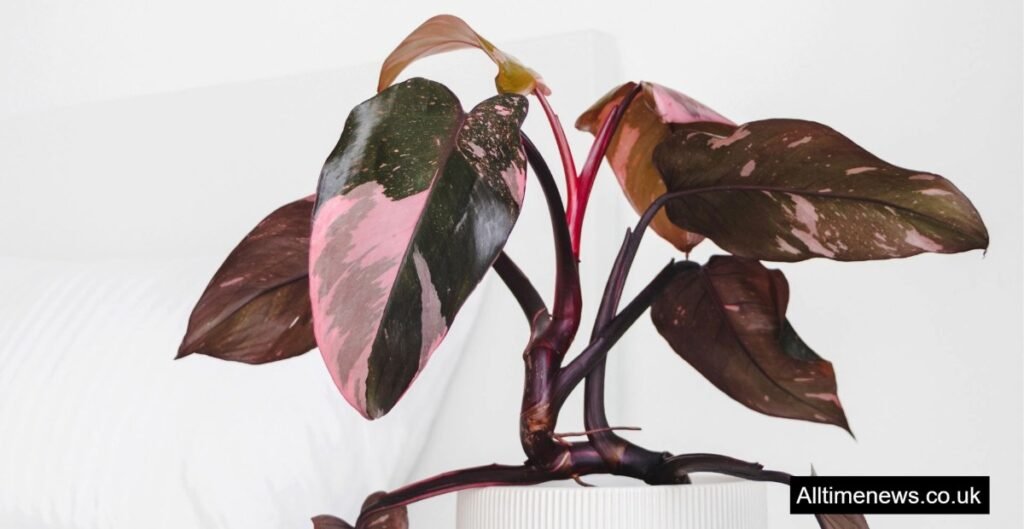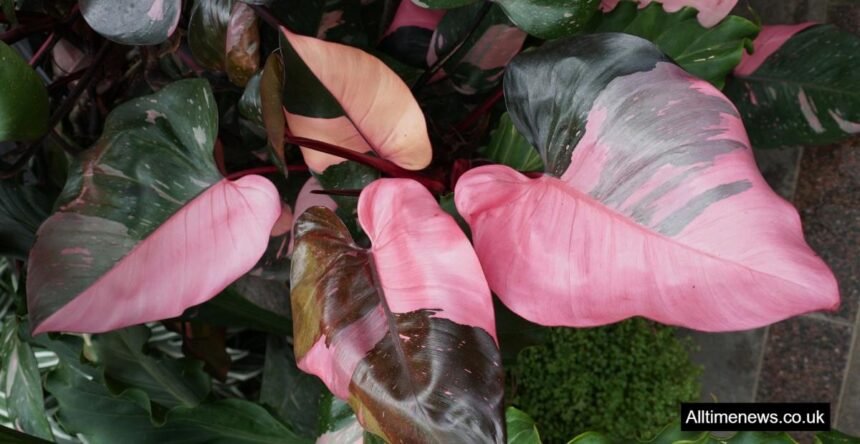The Pink Princess Philodendron, with its striking pink and green leaves, is a captivating houseplant that has taken the indoor gardening world by storm. Its unique appearance and relatively easy care requirements make it a favorite among plant enthusiasts. This article explores everything you need to know about this stunning plant, including its characteristics, care tips, and price.
Facts About the Pink Princess Philodendron
- Scientific Name: Philodendron erubescens
- Common Name: Pink Princess Philodendron
- Size: Can grow up to 3 feet (0.9 meters) in height and 2 feet (0.6 meters) in width
- Leaf Color: Features a mix of deep green and vibrant pink hues
- Light Requirements: Prefers bright, indirect light
- Temperature Range: Thrives in temperatures between 65-80°F (18-27°C)

Description
The Pink Princess Philodendron (Philodendron erubescens) is a member of the Araceae family, renowned for its dramatic foliage. Its leaves display a striking contrast between deep green and vibrant pink hues, which vary depending on light conditions and plant health. The plant can grow as a climbing or trailing vine, making it versatile for various indoor settings.
Origin
Native to the tropical rainforests of Colombia, the Pink Princess Philodendron thrives in warm, humid environments. Its natural habitat provides a clue to the conditions it prefers in home care, including high humidity and indirect light.
Growth
In ideal conditions, the Pink Princess Philodendron can grow rapidly, producing new leaves regularly. It can reach up to 3 feet in height and 2 feet in width, making it an impressive addition to any indoor garden.
Tips for Care
Light Requirements
The Pink Princess Philodendron thrives in bright, indirect light. Direct sunlight can scorch its leaves, while too little light may lead to slower growth and less vibrant coloring. A spot near a north or east-facing window is often ideal. For optimal growth, consider using grow lights if natural light is insufficient.
Watering
Watering is a crucial aspect of care. The soil should be kept consistently moist but not waterlogged. Allow the top inch of soil to dry out before watering again. Overwatering can lead to root rot, a common issue with this plant. In contrast, underwatering can cause the leaves to droop and lose their vibrant color.
Humidity
Being a tropical plant, the Pink Princess Philodendron loves high humidity. Aim to maintain a humidity level of around 60-70%. You can achieve this by placing a humidifier near the plant, using a pebble tray, or regularly misting the leaves. Adequate humidity helps preserve the plant’s colorful foliage and overall health.
Temperature
This plant prefers temperatures ranging from 65-80°F (18-27°C). Avoid exposing it to temperatures below 50°F (10°C) or sudden temperature fluctuations. Drafts and cold spots can stress the plant and affect its growth.
Soil and Fertilization
Use a well-draining potting mix to ensure proper root health. A mix designed for aroids or a combination of peat, pine bark, and perlite works well. Fertilize the plant monthly during the growing season (spring and summer) with a balanced, water-soluble fertilizer. Reduce feeding in the fall and winter when the plant’s growth slows.
Pruning and Maintenance
Regular pruning helps maintain the Pink Princess Philodendron’s shape and encourages bushier growth. Remove any yellow or brown leaves to keep the plant healthy. You can also trim the vines to control the plant’s size and shape. Be sure to use clean, sharp scissors or pruning shears to prevent disease transmission.
Price and Availability
The Pink Princess Philodendron is available at various price points depending on the size and source. Smaller, younger plants typically range from $30 to $60, while mature, well-established specimens can cost $100 or more. Prices may vary based on the plant’s condition, rarity, and vendor. You can find this plant at local nurseries, specialty plant shops, and online retailers.
Common Issues and Solutions
Pests
The Pink Princess Philodendron can be susceptible to pests like spider mites, aphids, and mealybugs. Regularly inspect the plant for signs of infestation. Use insecticidal soap or neem oil to treat affected areas. Keeping the plant’s environment clean and avoiding overcrowding can also help prevent pest problems.
Diseases
Root rot and fungal infections are common issues. Ensure proper drainage and avoid overwatering to prevent root rot. If you notice any signs of fungal infections, such as spots on the leaves, treat the plant with a fungicide and remove affected parts.
Leaf Discoloration
If the leaves turn yellow or lose their pink coloration, it may indicate problems with light, water, or nutrients. Adjust the plant’s care routine based on the specific symptoms observed. Ensuring proper light, moisture, and fertilization can help restore the plant’s vibrant appearance.
You may also like
- What do crickets eat?
- Liquid Aminos: Benefits and Potential Downsides
- Jamaican Black Castor Oil: Benefits, How-to Use, and More
Conclusion
The Pink Princess Philodendron stands out with its striking pink and green leaves, making it a beloved choice for indoor gardeners. With proper care, including attention to light, humidity, watering, and temperature, this plant can thrive and bring beauty to any space. While it may come with a higher price tag, the aesthetic appeal and unique characteristics of the Pink Princess Philodendron make it a worthy investment for plant enthusiasts.
Whether you’re a seasoned plant lover or new to indoor gardening, the Pink Princess Philodendron offers a visually stunning addition to your collection. By following the tips outlined in this article, you can enjoy the vibrant beauty of this remarkable plant for years to come.
